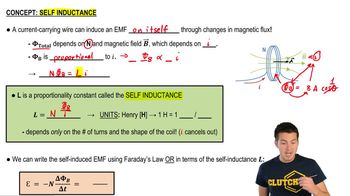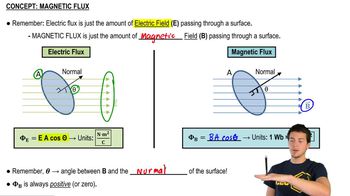Here are the essential concepts you must grasp in order to answer the question correctly.
Self-Induced EMF
Self-induced electromotive force (emf) occurs in a coil when the current flowing through it changes, generating a magnetic field that induces an emf opposing the change. This phenomenon is described by Faraday's law of electromagnetic induction, which states that the induced emf is proportional to the rate of change of magnetic flux through the coil.
Recommended video:
Faraday's Law of Induction
Faraday's Law quantifies how a changing magnetic field within a closed loop induces an emf. The law states that the induced emf (ε) is equal to the negative rate of change of magnetic flux (Φ) through the loop, expressed mathematically as ε = -dΦ/dt. This principle is fundamental in understanding how solenoids and inductors operate in circuits.
Recommended video:
Magnetic Flux
Magnetic flux (Φ) is a measure of the quantity of magnetism, taking into account the strength and the extent of a magnetic field. It is defined as the product of the magnetic field (B) and the area (A) through which the field lines pass, adjusted for the angle (θ) between the field lines and the normal to the surface: Φ = B * A * cos(θ). In the context of solenoids, it helps determine the amount of magnetic field produced by the current.
Recommended video:
 Verified step by step guidance
Verified step by step guidance


